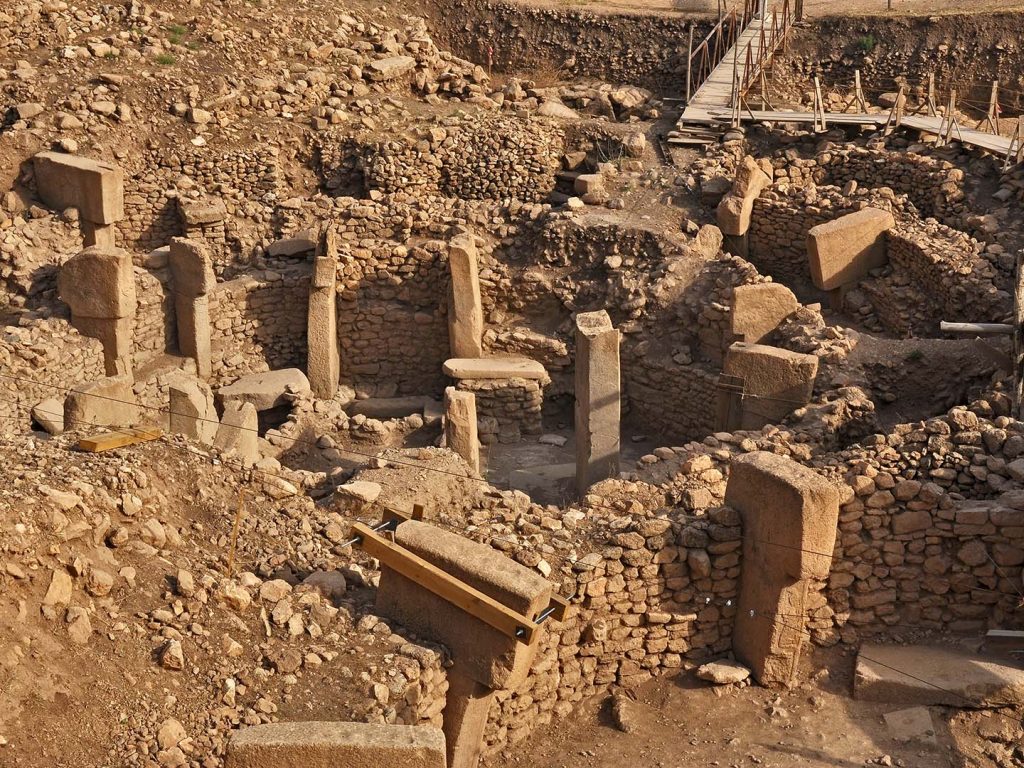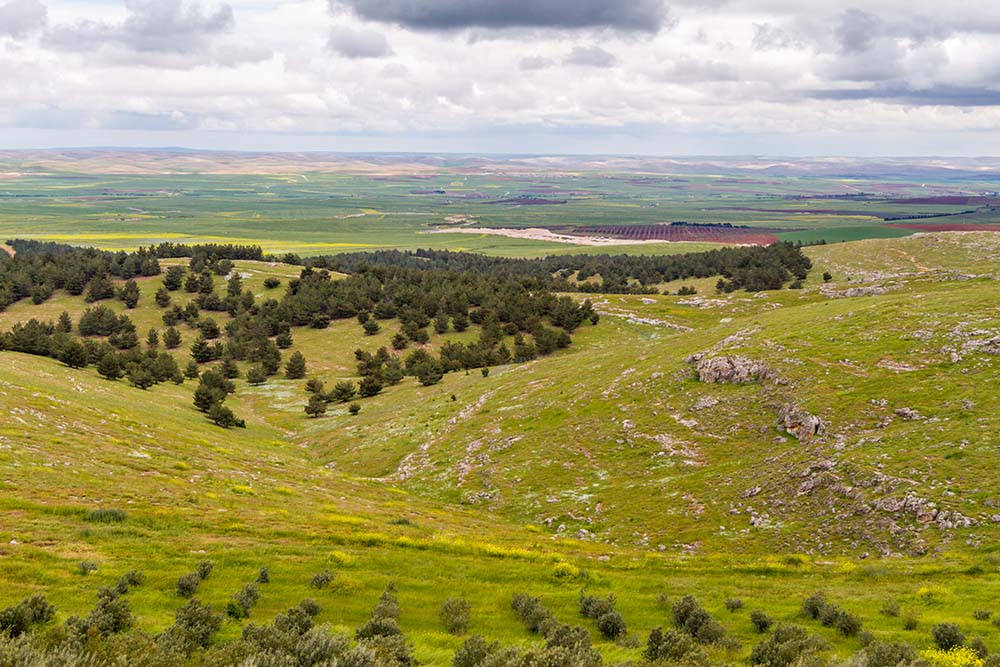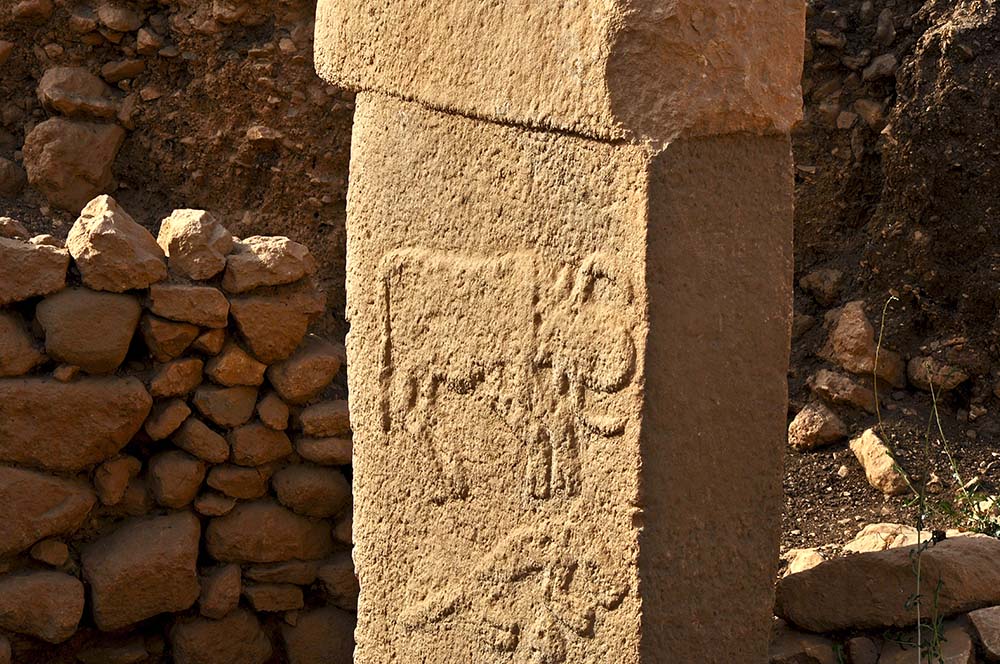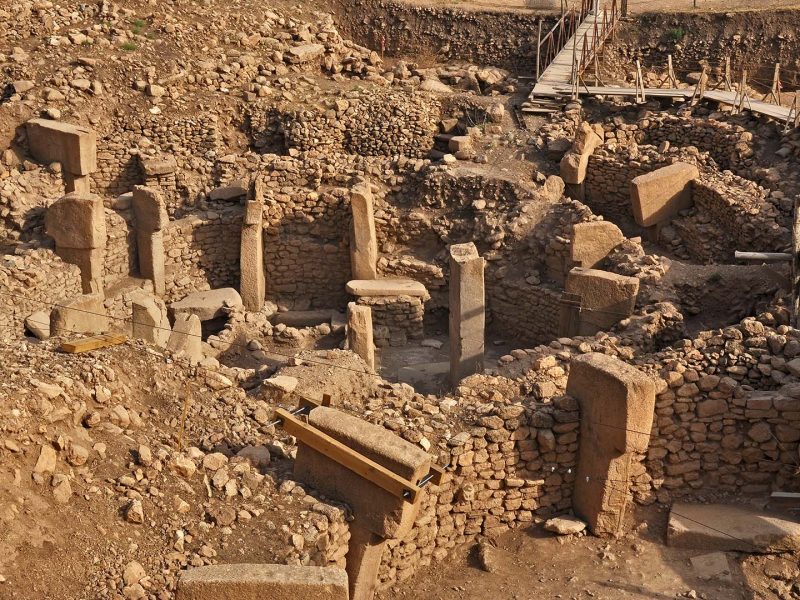Göbeklitepe is known as one of the first temples of the world, and has been very recently cited as UNESCO World Heritage Site. According to archaeological investigations, the temple is located 10 to 15 kilometers from Şanlıurfa. Round structures were found there, built on the elevation, that date to 12,000 years old. These findings were first detected in surface investigations in the 1960s, then the results of the research were published by Peter Benedict in 1980. However, the findings have not been discussed much because the importance of this settlement could not be addressed well at that time.

Findings in Göbeklitepe
Findings from the excavations in the Southeastern Anatolian Region belong to ancient times even further back before the making of pottery. Monumental works were created in the form of circles. Archaeologists have identified different evidence of sacred festivals when they made deeper excavation. Stone structures were built, and over time this area was filled with human, animal, and stone remains. For centuries, new structures were built on these ruins and a mound was built there by humans. There were giant stone vessels that could hold over 150 liters of liquid. This could lead us to believe that drinks, perhaps alcoholic beverages, were produced in quantity back then. The stone tools and the processed stones found in Göbeklitepe prove that in this period, people here established the first permanent settlement.
Today, this region appears mountainous and consists of white limestone and brown soil. There are green meadows and flowers around it. When you approach the hill, you might feel something inexpressible. According to studies conducted in the region, only six of the open structures of a predicted 20 have been removed. It is known that the constructions were made for religious purposes and stood as the first temples of the world. The temples are common direction in terms of their construction. T-shaped columns are one of them. The columns are about 6 meters tall and feature abstract symbols and animal illustrations like the demoiselle crane, snakes, ducks, and bulls. The most remarkable among them is the lion relief. The columns weigh 60 tons; however, how the columns were moved in this period of primitive construction machinery has not yet been resolved.

A view of Gobeklitepe valley near ruins and dig site.
Some findings that prove how important Göbeklitepe are the stone sculptures found in excavations. These stone sculptures’ weigh about 9 tons. In the field of archaeology, this period is known as the individualistic period when people do not work and live together. However, dozens of people need to work together to carry a column of even about 10 tons. It is astounding that hundreds of people lived together and developed their understanding of art, even at a time when people did not know much about sculpture and live collectively. The figures carved on the stones have certain meanings. It is thought that the snake indicates rebirth, the goat is a symbol of abundance, the demoiselle crane stands as a symbol of a life form that is able to fly between worlds (i.e., the world after death), and the symbol of intelligence is the fox.
There were no traditional graves found in this region dating back 12 thousand years ago. Out in the open, the dead were eaten by predators. It was believed that the souls then went to the happy hunting grounds; this tradition is known as the “bury to sun” tradition. On the stones, we see predators like birds eating the people, a method that was applied in some parts of Tibet and Iran until recently. According to research, human bones and animal bones were found in the excavations process, and it is thought that these animals were cut for the purpose of nutrition, oath, or for sacrifice.

The Oldest Temple of the World
There are also some agricultural findings. In fact, it is revealed that wheat, an important Anatolian product, was grown in Göbeklitepe. Farming at that time was important for a community’s nutrition. In the periods to follow, cuneiform writings developed to record crops and other agricultural production. When crowding was noted in post-agricultural society, people were introduced to the concept of foreigners, since there people coming to the region to trade or to settle. Of course, the above-mentioned issues occurred only after the Göbeklitepe was buried underground. In this case, it was determined that Göbeklitepe was inhabited during the Neolithic period and then afterwards abandoned.
The Göbeklitepe remains are impressive findings of history, and it is thought that the region was active about seven thousand years before even the pyramids in Egypt were built. The mystic remains of the temple and the surrounding areas are now exhibited in the museum. It is difficult to find another center with such a deeply rooted and mysterious past, even among countless Anatolian civilizations. Today, Göbeklitepe is known internationally as UNESCO Site, and it hosts quite active tourist visits. Around 10 years ago, people could get to the area by a path, but now, accessibility by vehicle has improved thanks to infrastructure improvements.

